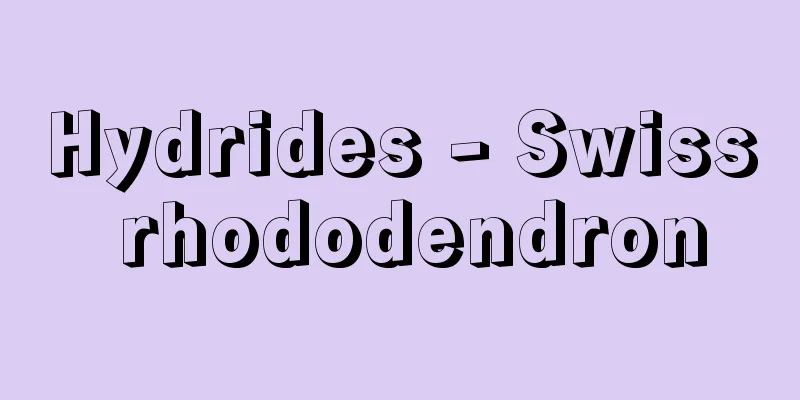Yokoyama Taikan

|
Japanese painter. His real name was Hidemaro. He was born in Mito on September 18th as the eldest son of Mito feudal samurai Sakai Sutehiko, and later inherited his mother's Yokoyama family. He moved to Tokyo with his family in 1878 (Meiji 11). After attending Tokyo Prefectural Middle School and the private Tokyo English School, he entered the Tokyo School of Fine Arts, which opened in 1889, where he was taught by Hashimoto Gaho and also mentored by Okakura Tenshin. He graduated from the school in 1893. His graduation piece was "A Village Child Sees an Enno." After teaching at the Kyoto School of Fine Arts and Crafts for a while, he became an assistant professor at his alma mater in 1896. When a commotion arose in 1898 at the art school to expel its principal Tenshin, he resigned along with Tenshin, Gaho, and others, and helped found the Japan Art Academy. "Qu Yuan" which was exhibited at the first exhibition is one of his early works. At the Academy of Fine Arts, he attempted to modernize Japanese painting with Shunso Hishida and others, and tried a bold lineless painting technique, but he was criticized as a member of the Mourouha school and struggled. In 1903 (Meiji 36), he traveled to India with Shunsō, and the following year he accompanied Tenshin to the United States with Shunsō and others, touring Europe in 1905 before returning to Japan. In 1906, he moved to Izura in Ibaraki Prefecture when the Japanese Painting Department of the Bijutsuin (Japanese Art Academy) moved there. He served as a judge at the first Bunten exhibition in 1907, and exhibited works such as "Two Hundred and Ten Days." Other works exhibited at early Bunten exhibitions included "Floating Lantern," "Mountain Path," and "Eight Views of Xiaoxiang." In 1908, his house in Izura burned down and he moved to Ikenohata in Ueno. In 1914 (Taishō 3), he and his comrades re-established the Japan Art Academy. He played an active role as a central figure at the Academy, exhibiting works such as "Yujin Yochiari" at the first exhibition of the Academy's revival, "Sakuemon's House" at the third exhibition, "Sansou Mugetsu" at the sixth exhibition, "Laozi" at the eighth exhibition, and "Seisei Ruten" at the tenth exhibition, and played an important role in the art world with the aim of creating modern Japanese painting based on the traditions of the East. In 1930 (Showa 5), he traveled to Italy as an art ambassador for the Japanese Art Exhibition in Rome. In 1931, he was made an Imperial Household Artist, and in 1935, a member of the Imperial Academy of Fine Arts, and in 1937, he was awarded the first Order of Culture. Other well-known works include "Muga," "Goryu Sensei," "Willow Shade," "Wild Flowers," and "The Pacific Ocean One Day." He died in Tokyo on February 26, 1958. His former residence at Ikenohata in Ueno is open to the public as the Yokoyama Taikan Memorial Museum. [Minoru Harada] "Taikan Painting Talks" by Yokoyama Taikan (1951, Kodansha)" ▽ "Yokoyama Taikan, 5 volumes, supervised by the Yokoyama Taikan Memorial Museum (1979, Dai Nippon Kaiga)" ▽ "Complete Works of Modern Japanese Art 2: Yokoyama Taikan, commented by Hosono Masanobu (1971, Shueisha)" ▽ "Complete Works of Modern Japanese Picture Scrolls 2 & 3: Yokoyama Taikan I & II, commented by Kawakita Michiaki and Iijima Isamu (1982, 1983, Shogakukan)" ▽ "Taikan, edited by Kawakita Michiaki (1962, Heibonsha)" ▽ "The Biography of Yokoyama Taikan, edited by the Yokoyama Taikan Biography Compilation Committee (1959, Ibaraki Prefecture)" [Reference] |National Diet Library Yokoyama Taikan Source: Shogakukan Encyclopedia Nipponica About Encyclopedia Nipponica Information | Legend |
|
日本画家。本名秀麿。水戸藩士酒井捨彦の長男として9月18日水戸に生まれ、のち母方の横山家を継いだ。1878年(明治11)一家と上京。東京府立中学校、私立東京英語学校を経て、1889年開校した東京美術学校に入学、橋本雅邦(はしもとがほう)の指導を受け、また岡倉天心(おかくらてんしん)に薫陶された。1893年に同校を卒業。『村童観猿翁(そんどうえんおうをみる)』はその卒業制作。しばらく京都美術工芸学校で教鞭(きょうべん)をとったのち、1896年母校の助教授になった。1898年に美術学校に校長天心を排斥する騒動が起こると、天心、雅邦らと連袂(れんべい)辞職、日本美術院創立に加わった。第1回展に出品の『屈原(くつげん)』は初期を代表する作。美術院では菱田春草(ひしだしゅんそう)らと日本画の近代化を企図し、大胆な没線描法を試みたが、朦朧派(もうろうは)と悪評されて苦闘を強いられた。 1903年(明治36)春草とともにインドに赴き、また翌年天心に従って春草らと渡米、1905年ヨーロッパを回って帰国。1906年美術院日本画部の茨城県五浦(いづら)への移転に伴い同地に移った。1907年の第1回文展に審査員として『二百十日』ほかを出品。なお『流燈(りゅうとう)』『山路(やまじ)』『瀟湘八景(しょうしょうはっけい)』などが初期の文展に出品されている。1908年五浦の家が火災にあって上野池之端(いけのはた)に移転。1914年(大正3)同志と日本美術院を再興した。以後美術院の中心として活躍し、再興第1回展に『游刃有余地(ゆうじんよちあり)』、第3回展に『作右衛門の家』、第6回展に『山窓無月(さんそうむげつ)』、第8回展に『老子』、第10回展に『生々流転(せいせいるてん)』などを出品、東洋の伝統に基づく近代日本画の創成を目ざして画壇に重きをなした。1930年(昭和5)ローマ日本美術展に際し美術使節として渡伊。1931年帝室技芸員、1935年帝国美術院会員にあげられ、1937年第1回の文化勲章を受章した。ほかに『無我(むが)』『五柳先生(ごりゅうせんせい)』『柳蔭(りゅういん)』『野の花』、『或(あ)る日の太平洋』などが著名。昭和33年2月26日東京で没。上野池之端の旧邸は横山大観記念館として公開されている。 [原田 実] 『横山大観著『大観画談』(1951・講談社)』▽『横山大観記念館監修『横山大観』全5巻(1979・大日本絵画)』▽『細野正信解説『現代日本美術全集2 横山大観』(1971・集英社)』▽『河北倫明・飯島勇解説『現代日本絵巻全集2・3 横山大観Ⅰ・Ⅱ』(1982、1983・小学館)』▽『河北倫明編著『大観』(1962・平凡社)』▽『横山大観伝記編纂委員会編『横山大観伝』(1959・茨城県)』 [参照項目] |国立国会図書館所蔵"> 横山大観 出典 小学館 日本大百科全書(ニッポニカ)日本大百科全書(ニッポニカ)について 情報 | 凡例 |
Recommend
Rye - rye
〘Noun〙 An annual or biennial plant of the grass fa...
Kyarabuki - Kyarabuki
〘 noun 〙 A type of dish. The stalks of butterbur (...
International Style
→International style architecture Source : Heibons...
Ostrovskii, Aleksandr Nikolaevich
Born: April 12, 1823, Moscow Died: June 14, 1886. ...
Four holes - Shiketsu
〘Noun〙 A tuning device used by blind koto players ...
Ontogenes
...the process by which a species of organism cha...
Prosopocoilus inclinatus
…The difference in mandibles between males and fe...
Stylochus frontalis (English spelling)
… [Minoru Imajima]. … *Some of the terminology th...
Moro (English spelling) Aldo Moro
Italian politician. Born into the intellectual cl...
Reflux ratio
...In this way, inside a distillation tower, liqu...
Haworthia retusa (English spelling) Haworthia retusa
…[Hiroshi Yuasa] [Aya Nitta]. … *Some of the term...
Encomienda (English spelling)
Land control and the indigenous trust system in Sp...
Tabanidae
…If we had to say, the word “horse fly” could ref...
Genus
… We can say that the surface of a biscuit has g ...
Kiwanuka, B.
...The election was won by the Democratic Party (...


![Hakushu [town] - Hakushu](/upload/images/67cc81aa9bc3f.webp)



![Kyotanabe [city] - Kyotanabe](/upload/images/67cb5cfae52da.webp)


